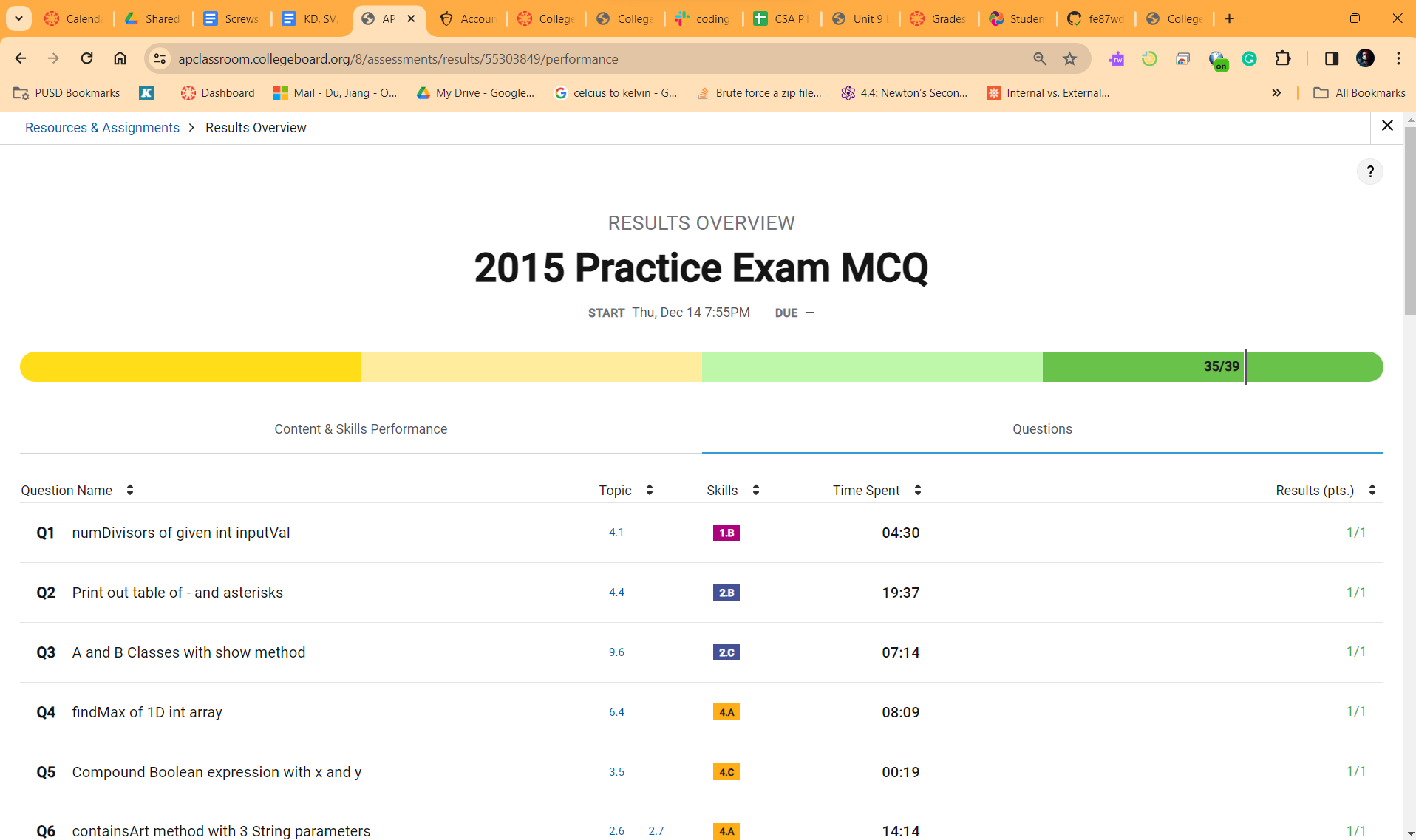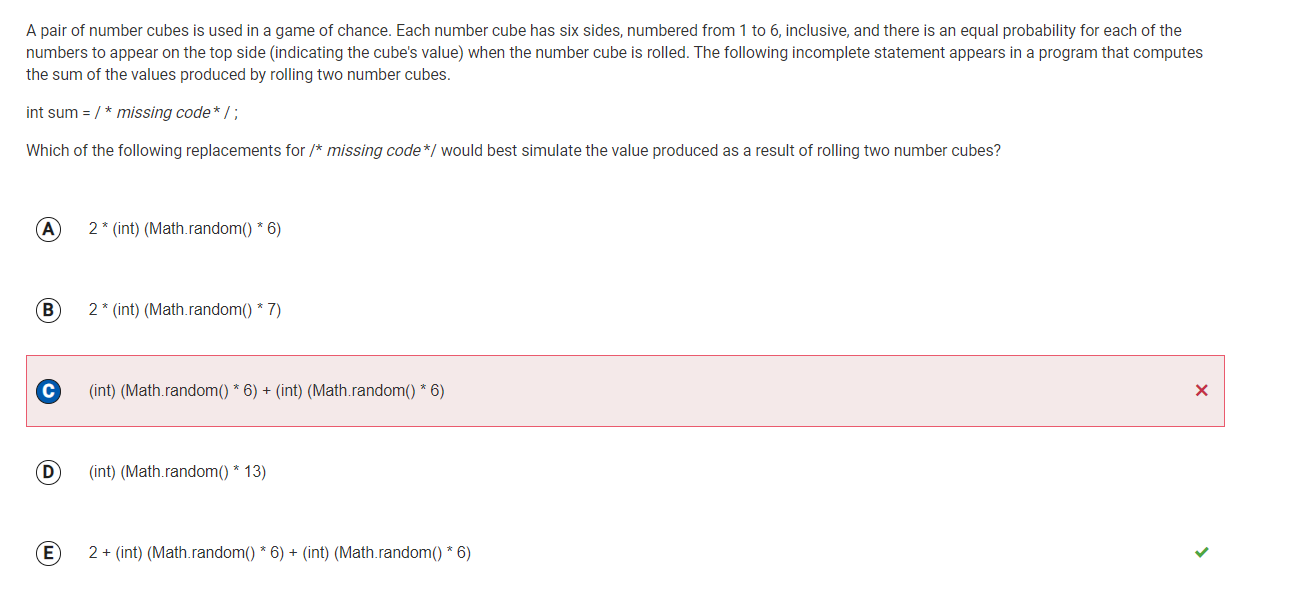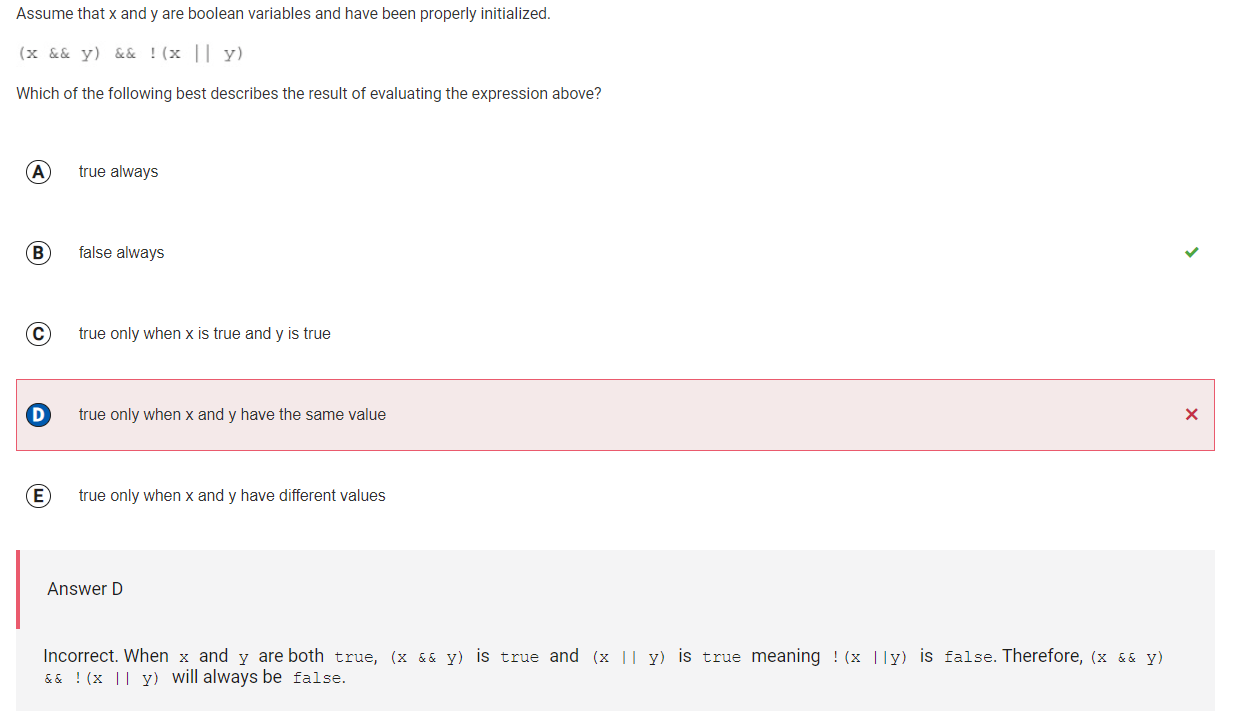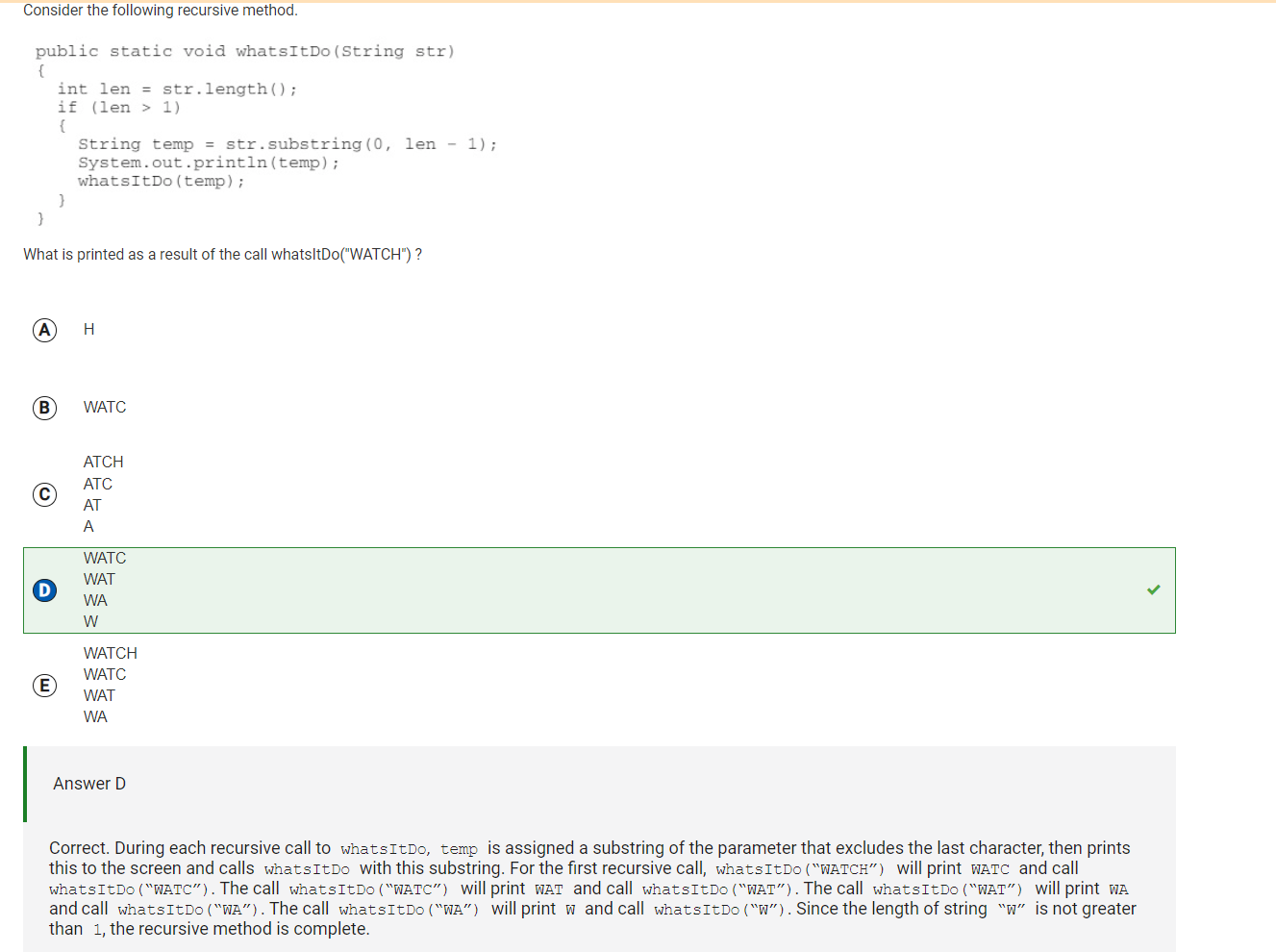My final collegeboard results were a 35/39. It was a challegning test. I got a 35/39. I spent like 2 hours throughout the entire test. There was a problem about implements and I got it wrong. The worst part is that its never part of collegeboard, therefore I never learned it. I did discover that when you implement a class, like the one the subclass implements, you can still do the same thing for the extends thing. The hardest problem for me was the dice problem and the easiest for me was the WATCH problem.

Hardest one:

What I struggled on: I wasn’t familiar with the Math.random functions so I always thought that Math.random has to be within some range. Therefore, I chose B. What I learned: When you multiply Math.random() by a number x, then it is limited to a random number within the interval from 0 to x excluding the number x. For example, Math.random() * 6 gets us a random number in the range (0,6), without including 6
Second Hardest One:

I wasn’t really clear on it. But what I learned from it is that for Demorgan’s Law, !(x||y) –> !x && !ye Easiest One:

I just related this to python and I managed to get this correct. I was once studying for a USACO Competition and one of them consisted of searching through parts of an array. I applied to java strings later on.
Summary: While passing the College Board exam was a difficult task, getting a score of 35 out of 39 seemed like a sign of my progress. My comprehension of probability, coding logic, and math skills were tested by the dice issue.Using random() with multiplication was a crucial step that demonstrated my development. Although I was originally frustrated to run into an additional challenge outside of the planned content, I learned the significance of adaptation and unexpected learning by embracing the unknown. By using my Python knowledge to solve the simpler problem, I was able to demonstrate the transferability of my programming abilities and the consistency of fundamental ideas across languages. All in all, this exam was an adventure that assessed my flexibility and problem-solving skills while demonstrating how principles in programming are related across a range of difficulties.